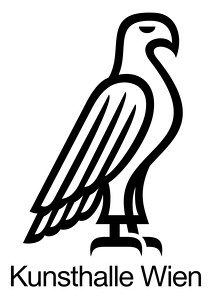June 25–October 16, 2016
Museumsquartier, Museumsplatz 1
1070 Vienna
Austria
Hours: Tuesday–Sunday 10am–6pm,
Thursday 10am–8pm
Concrete is both durable and flexible. High-rise buildings, prestressed concrete bridges and other spectacular 20th century icons could not have been realised without it. Nevertheless, concrete was for a long time considered as a material without qualities, as the refractory of modern mass society. The “inhospitality of our cities” is associated with the grey anonymity of rapidly erected post-war buildings in a unified style. On the other hand, in the 1960s and ’70s, the uncompromising characteristic of the material, its affirmation of the contemporary and its break with tradition, mirrored a time that believed emphatically in the architectural malleability of the future. The economic and cultural boom of the post-war era and its dreams of a different, socially integrated society resulted in buildings that did not aim for modernist timelessness, but conceived the present as a vector pointing to a time still to come.
Housing blocks, floating streets, and space-age design: post-war urban planning was about more than mere construction. It was concerned with the implementation of a “concrete utopia” featuring the most innovative material of the time. To this day, concrete is perceived as progressive. The exhibition Béton emphasises the perpetually modern aspect of this material, while shining light on the social and ideological implications of past concrete architectures at the same time.
In late modernism, a style of building evolved which bore a strong relation to the material—so-called Brutalism, named after the French word for raw concrete: béton brut. Brutalist architecture was radical and signified intransigence. The flexibility of the material with its potential for expressive design allowed for an experimental approach and an exploration to the very limits of its inherent possibilities. But concrete is also defined by a significant social element: in post-war times, extensive projects for social structures such as council buildings, educational institutions, and cultural centres were carried out in concrete. After falling into disrepute in the late 1980s, this material is currently experiencing a renaissance: contemporary artists are fascinated by the duality of expressive aesthetics and the “Human Modernism” associated with concrete architecture. Despite the fact that a number of these structures remain only as ruins today—as though testimonials of a failed ideology—they still convey the modernist promise of creating innovative designs for real living conditions. Hence, the show takes a retrospective look in order to reactivate the potential of concrete for the future.
For some time now, there has been an increased focus on post-war urban planning in contemporary art, rekindling the euphoria it inspired. A reconsideration of the aesthetic and social implications of concrete also makes this material the object of a quest for prospective possibilities.
Artists: Kasper Akhøj, Heba Amin, Monica Bonvicini, Mark Boyle, Andreas Bunte, Tom Burr, Thomas Demand, Werner Feiersinger, Karsten Födinger, Cyprien Gaillard, Isa Genzken, Liam Gillick, Annette Kelm, Hubert Kiecol, Jakob Kolding, Miki Kratsman, Susanne Kriemann, David Maljković, Jumana Manna, Ingrid Martens, Isa Melsheimer, Olaf Metzel, Maximilian Pramatarov, Heidi Specker, Ron Terada, Tercerunquinto, Sofie Thorsen, Klaus Weber, Tobias Zielony
Curators: Vanessa Joan Müller, Nicolaus Schafhausen
Stay connected:
Please check our website for regular updates on our program.
For further information please contact: Katharina Murschetz
T +43 (0) 1 5 21 89 1221 / presse [at] kunsthallewien.at

